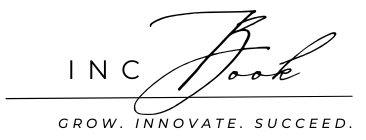Record Surge in Small Business Lending: A Boost to Entrepreneurship in 2025
- Record Lending Surge: SBA 7(a) loan program saw a record $8.8 billion in the first quarter of 2025, marking the second-largest start since its inception.
- Post-Pandemic Recovery: Increased demand for loans in sectors like retail, food services, and healthcare as small businesses rebound from the pandemic.
- Government Support: Policies from the Biden Administration and SBA’s efforts to make funding more accessible have driven loan growth.
- Diversity in Entrepreneurship: A rise in loans to women and minority entrepreneurs, reflecting more inclusive business growth.
- Low Interest Rates: Continued low interest rates have made it easier for entrepreneurs to secure affordable loans to expand and grow their businesses.
The small business landscape in the United States is experiencing a record surge in lending, marking an encouraging trend for entrepreneurs and startups in 2025. According to recent data, Small Business Administration (SBA) loans, particularly the 7(a) program, reached $8.8 billion in the first quarter of 2025, making it the second-largest start to the year since the program’s inception. This surge is indicative of strong investor confidence in the small business sector, despite broader economic challenges.
This unprecedented increase in small business loans comes on the heels of a post-pandemic economic recovery, government policy support, and renewed interest in entrepreneurship, particularly among historically underrepresented groups such as women, minorities, and veterans. The surge in lending is also linked to a growing number of individuals choosing to become business owners after leaving the corporate world or deciding to pursue their entrepreneurial dreams.
What’s Driving the Surge in Small Business Lending?
The surge in small business lending can be attributed to several key factors:
1. Post-Pandemic Economic Recovery
The COVID-19 pandemic caused significant disruption to small businesses, but recent data shows a strong recovery, especially in sectors such as retail, food services, and healthcare. As businesses have re-opened and adapted to a new normal, demand for loans to expand operations, increase inventory, and hire employees has skyrocketed.
2. Government Support and Policy Changes
The Biden Administration’s efforts to strengthen small businesses through increased access to funding have played a significant role in this surge. The American Rescue Plan and other economic relief packages provided small businesses with financial tools to recover and thrive. Additionally, the SBA has made it easier for small business owners to access loans through its 7(a) program, which offers lower interest rates and favorable repayment terms.
3. Diversity in Entrepreneurship
There has been a noticeable increase in lending to women and minority-owned businesses. According to recent data, women entrepreneurs alone account for a substantial portion of the new business loan applications. This rise in diverse entrepreneurship is a reflection of both social change and targeted lending programs that aim to foster a more inclusive business environment.
4. Low Interest Rates
The low interest rate environment, which has persisted in the aftermath of the pandemic, continues to make borrowing attractive to small business owners. As interest rates remain lower than historical norms, many entrepreneurs are seizing the opportunity to secure affordable financing to grow their businesses.
The Implications for Small Business Growth
This surge in small business lending has broader implications for the economy. Small businesses are a critical driver of job creation, economic growth, and innovation. By supporting entrepreneurs with the necessary financial backing, this increased lending activity helps stimulate economic development at the local level. Moreover, with the continuing rise in the number of small businesses, job creation is expected to grow, particularly in non-tech sectors, which traditionally drive regional economies.
Increased lending also positions small businesses to take advantage of new market opportunities, particularly as the economy becomes more digital. Many businesses are using loans to upgrade their technology infrastructure, adopt e-commerce strategies, and expand into new markets.
Challenges and Considerations
While the surge in small business lending is a positive trend, there are still challenges that need to be addressed. Some small businesses may struggle to meet the eligibility criteria for loans, particularly when it comes to their creditworthiness or financial history. Additionally, there are concerns about the rising cost of goods and supply chain disruptions, which could affect small businesses’ ability to use loans effectively.
Another challenge lies in the accessibility of capital for certain groups, including very small businesses, especially in underserved communities. Although there has been improvement, lenders and the government must continue working to ensure that capital flows more evenly to all potential business owners, regardless of their background or geographic location.
A Bright Future for Small Business Lending
With the trend of increased small business lending showing no signs of slowing down, entrepreneurs can expect continued support throughout 2025. Whether they are starting a business, expanding their operations, or exploring new technologies, the availability of capital provides a strong foundation for innovation and growth.
Looking ahead, small business owners should continue to leverage available funding options, including SBA-backed loans, private lending, and venture capital, to scale their operations. This influx of capital, coupled with ongoing government support, is a bright signal for the future of small business in America.
